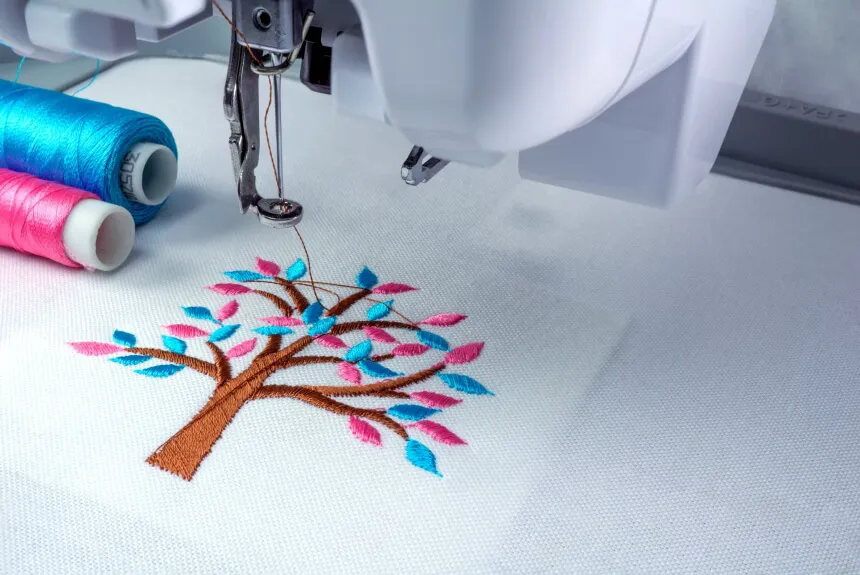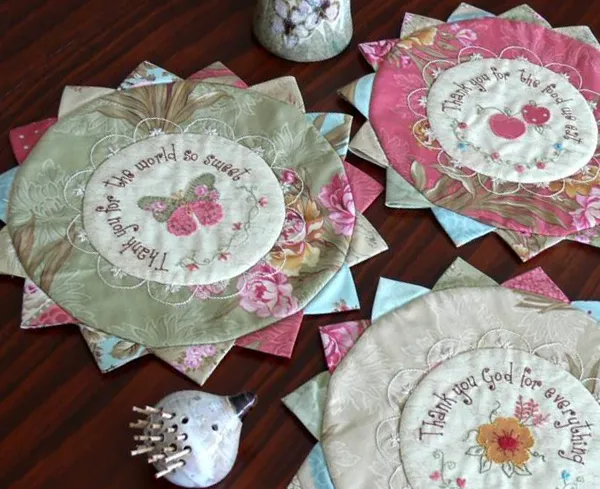The Best Fabrics for Beginners: A Guide to Embroidery Success
Learn about the best fabrics for beginners to start their embroidery journey.
Learn about the best fabrics for beginners to start their embroidery journey.
Practice Embroidery Stitches
The very first thing you’ll want to practice is basic embroidery stitches. Don’t overwhelm yourself, though. Select a handful of stitches you’d like to perfect and keep working on them until you feel super comfortable.
Embroidery Sampler Pattern
This sampler embroidery pattern is a fun practice pattern that helps you to learn several beginner friendly embroidery stitches. Sampler patterns are an amazing way to start practicing. There isn’t as much pressure to make the piece look perfect but you’ll still have a nice looking design when you’re finished.
Sometimes figuring out what to stitch is the hardest part. This E-book features 50+ modern embroidery designs that you can download, print out, and trace. Put your own spin on each design with your choice of stitches and colors. Get your creative juices flowing and get started stitching!
Gather Your Embroidery Materials
Embroidery is a hands-on craft, and like any craft, it starts with gathering the right materials. Think of these materials as your toolkit for creating beautiful embroidered designs. Here's a simple list of what you'll need:
- Embroidery Hoop: This is a two-part ring that holds your fabric taut while you work. It comes in different sizes, so a medium-sized hoop would be a good start.
- Fabric: You can embroider on just about any fabric, but beginners often find cotton or linen easiest to work with.
- Embroidery Needles: These have larger eyes than regular sewing needles, making them easier to thread.
- Embroidery Floss: This is the thread you'll use to create your designs. It's thicker than regular sewing thread and comes in a rainbow of colors.
- Scissors: A good pair of sharp scissors is important for clean, neat cuts.
- Pencil or Water-Soluble Marker: You'll use this to transfer your design onto the fabric before you begin stitching.
Now that you have your materials ready, you're one step closer to learning how to embroider in a week! It's like setting the table before a meal—it makes the whole process smoother and more enjoyable. Remember, the goal is not just to learn but to have fun along the way. So, gather your materials, make a cozy space, and let's get ready to create something beautiful!
FAQ
Can you use any fabric for embroidery?
In theory, you can embroider any fabric, but natural fabrics are easier to work with and offer the best results.
How do you prepare fabric for embroidery?
If you’re using cotton, you’ll need to prewash the fabric before you start. Once you’re ready to begin, iron the fabric and transfer the design. Finally, ensure the fabric is properly fitted in your hoop. It should be taut, but not stretched tight or you may distort your pattern.
Specialized Embroidery Methods
If you’re ready to level up your embroidery skills,
specialized methods like goldwork and stumpwork offer endless creative possibilities.
These advanced techniques add striking textures and dimension, making your designs truly stand out.
Goldwork Techniques
Goldwork combines rich metal thread and gleaming gold embellishments to elevate your embroidery mastery.
Start with fabric preparation—sturdy cotton or linen works best to handle the tension.
Couching keeps thread secure while padding adds dimension.
To achieve professional results, using high quality thread is essential for goldwork embroidery.
Keep an eye on thread tension to avoid breaks.
Mastering these embroidery techniques transforms simple fabric into jaw-dropping, advanced embroidery treasures fit for royalty.
Stumpwork Applications
Stumpwork takes your needlework skills to the next level with raised embroidery and fabric sculpting magic.
Love dimensional flowers? Try this:
- Build 3D shapes using wire and buttonhole stitch.
- Stitch French knots into a circle, gather them, and voilà – hydrangeas!
- Use quilt batting under satin stitch for a soft, raised effect.
Transform flat textiles into miniature scenes with these embroidery techniques!
Silk Shading Effects
Silk shading brings your designs to life with its paint-like effects.
By mastering shading techniques and focusing on color gradation, you’ll create stunning shifts that mimic light and shadow.
Fabric choice and thread selection are key—smooth silks work wonders.
This advanced embroidery technique adds texture creation and depth, transforming simple needlework skills into high-impact embroidery stitches that feel almost magical.



Tegs:
Search
Recent Posts
-
Find the Perfect Stabilizer for Your T-Shirt Embroidery Projects
Apr 14 2025
-
Sew Leather Like a Pro: The Best Sewing Machines for Leatherwork
Apr 14 2025
-
Find the Perfect Hair Care Routine: Best Shampoo and Conditioner for Weave
Apr 14 2025
-
Achieve Precision: Choosing the Right Dremel Bit for Wood Carving
Apr 14 2025
Subscribe to Updates
Get the latest posts and fashion insights directly in your inbox.